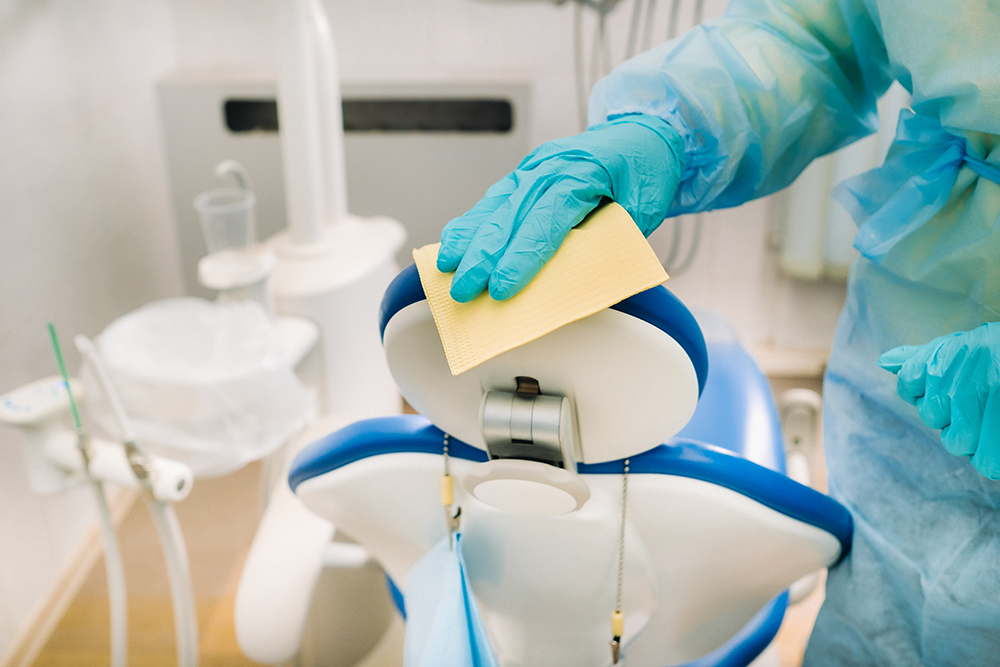Coming to Terms: Clean and Cleaning

Although cleanliness may be next to godliness, it’s also very closely related to disinfection. In fact, cleaning may avert the need to disinfect in some situations because clean and dry surfaces can’t harbor microbial growth for very long.
In view of the evidence that transmission of many healthcare acquired pathogens (HAPs) is related to contamination of near-patient surfaces and equipment, all hospitals are encouraged to develop programs to optimize the thoroughness of high touch surface cleaning as part of terminal room cleaning at the time of discharge or transfer of patients. In view of this fact, isn’t it time to get rid of Spaulding’s classification of those near patient surfaces and equipment as “non-critical“?
How do we define “clean” or “cleaning”, “disinfection” or “disinfecting” for the Environmental Services technician to insure a safe, clean and disinfected environment?
Personally, I prefer the definition that Michael Berry, PhD, promotes for “clean” and “cleaning.”
Clean is a condition free of unwanted matter that has the potential to cause an adverse or undesirable effects. Cleaning is the fundamental management process of putting unwanted matter in its proper place to achieve a clean condition.
Cleaning professionals will understand these definitions and be able to deliver the desired outcomes.
In my professional opinion, along with “Spaulding’s non-critical” classification for near patient surfaces, we need to get rid of the term “visibly soiled“. There are more than enough C-diff spores in the size of a pinhead to transmit the pathogen. When the ES technician is given the instruction to clean “visibly soiled” surfaces, are they looking for soil the size of a pinhead? No, they don’t have time…they have eight more patient rooms to clean in the next two hours before they clock out.
The fact is, surfaces appearing to be clean might not necessarily be clean when scientifically quantified or qualified. Remember, what you can’t see, can hurt you. The ES technician should be educated and trained to strive for health-based or hygienic cleaning (cleaning for a healthier environment and not just for appearances). That means cleaning AND disinfecting
A hospital-approved disinfectant kills microbes of importance to their particular facility. Environmental Services leaders should choose disinfectants in concert with infection preventionists, pharmacy leaders and infectious disease physicians.
However, depending on the pathogen, preventing the microbes from getting a foothold by removing food and moisture (two essentials for sustaining living organisms)may, in the long-term, be as effective as a chemical disinfectant. In fact, chemical disinfectants can’t do their job when high levels (greater than 5% which is required for EPA-registration) are in the way. Soil can absorb the active ingredient, provide more places for the germs to hide, and change the chemical nature of the disinfectant.
Cleaning and disinfection are NOT interchangeable terms, but many treat them as if they were. Cleaning and disinfection are two distinct operations that those doing the daily processing of patient care areas must understand. That’s why both the EPA the CDC guidance calls for the application of disinfectants to pre-cleaned surfaces. A surface that has not been cleaned effectively cannot be said to be properly disinfected.
I’d like to leave you with this truth; One engaged Environmental Services technician given the right tools, education and enough time to perform the process of cleaning and disinfection can prevent more infections than a room full of doctors can cure.
About the Author
J. Darrel Hicks is the immediate past president of Healthcare Surfaces Institute and nationally recognized as one of the subject matter experts in infection prevention and control as it relates to cleaning.

